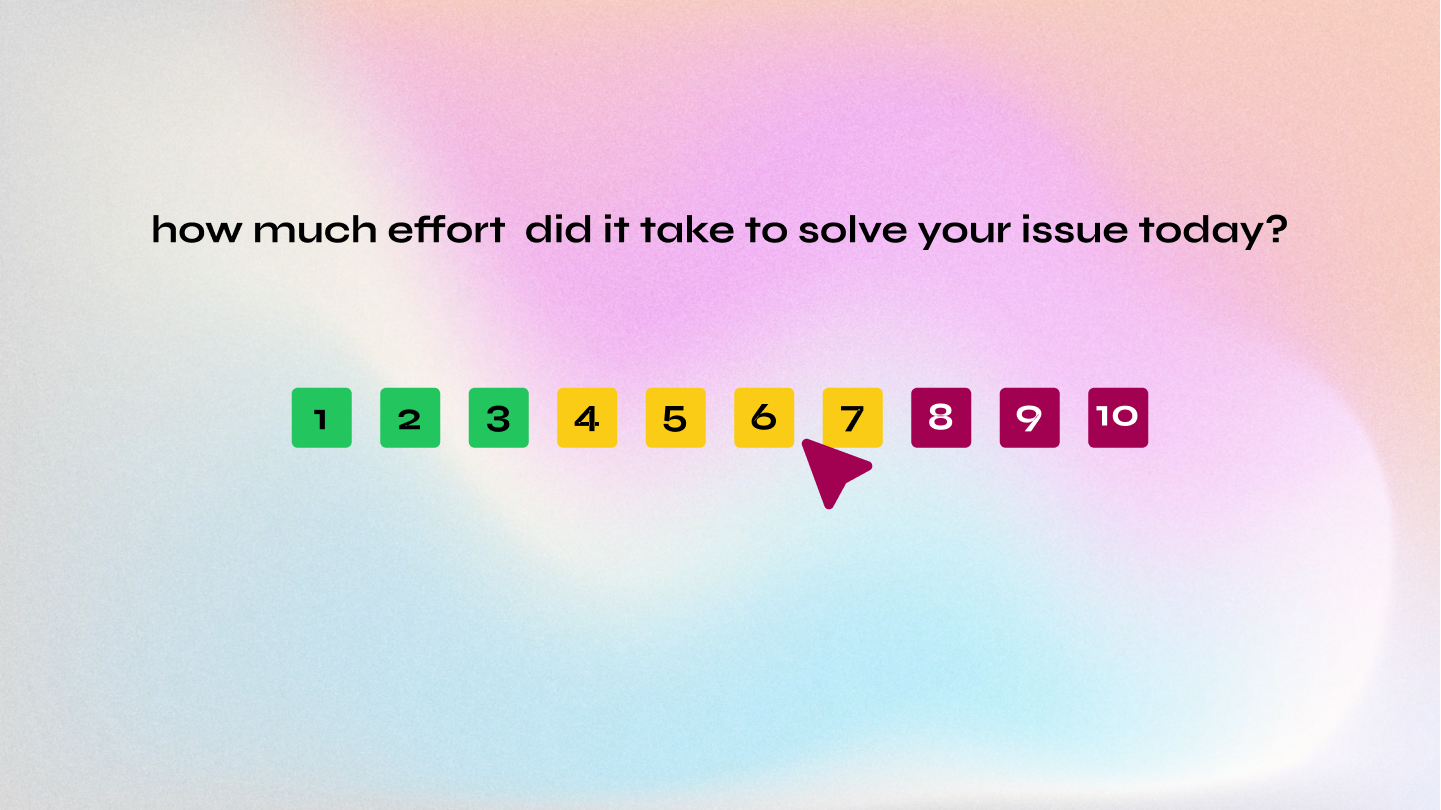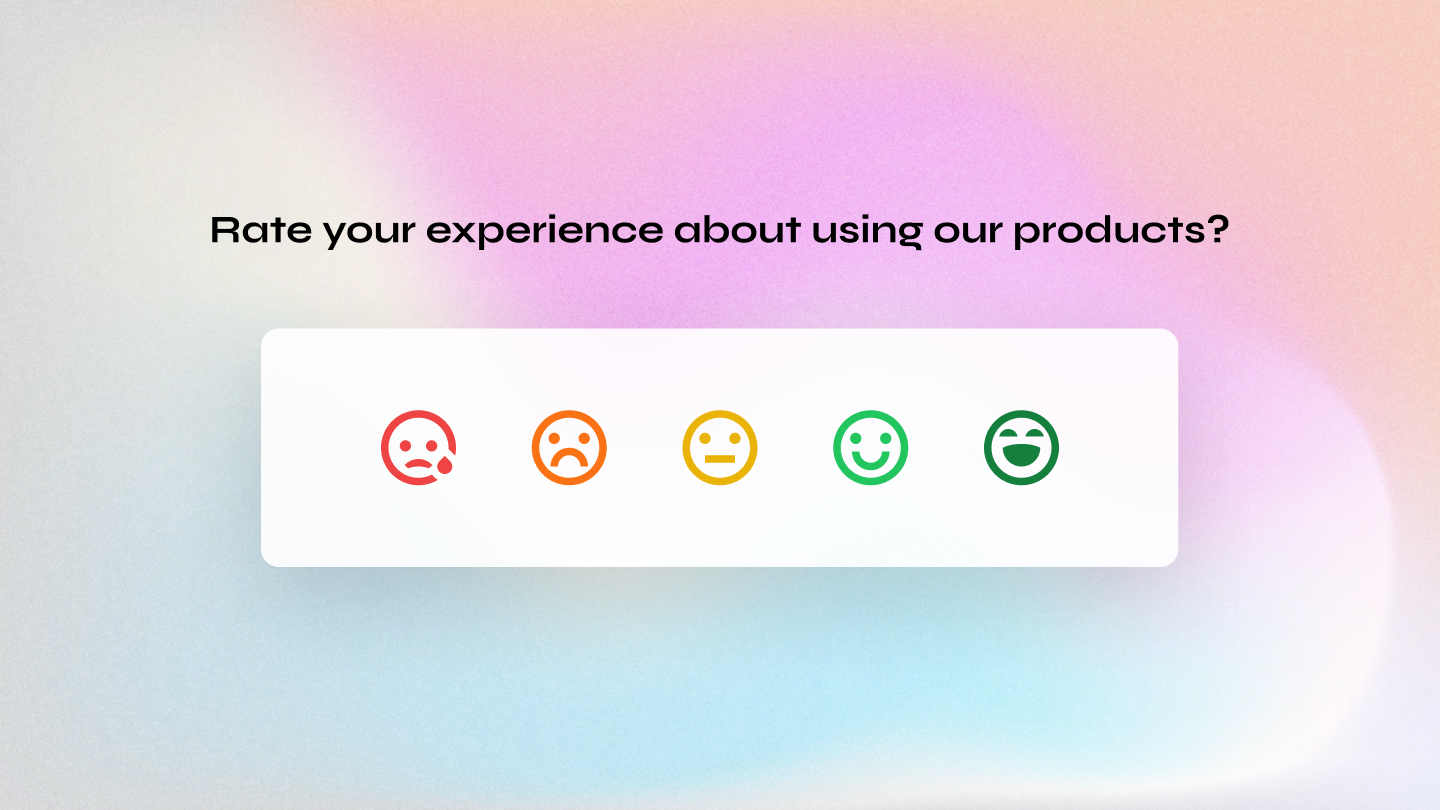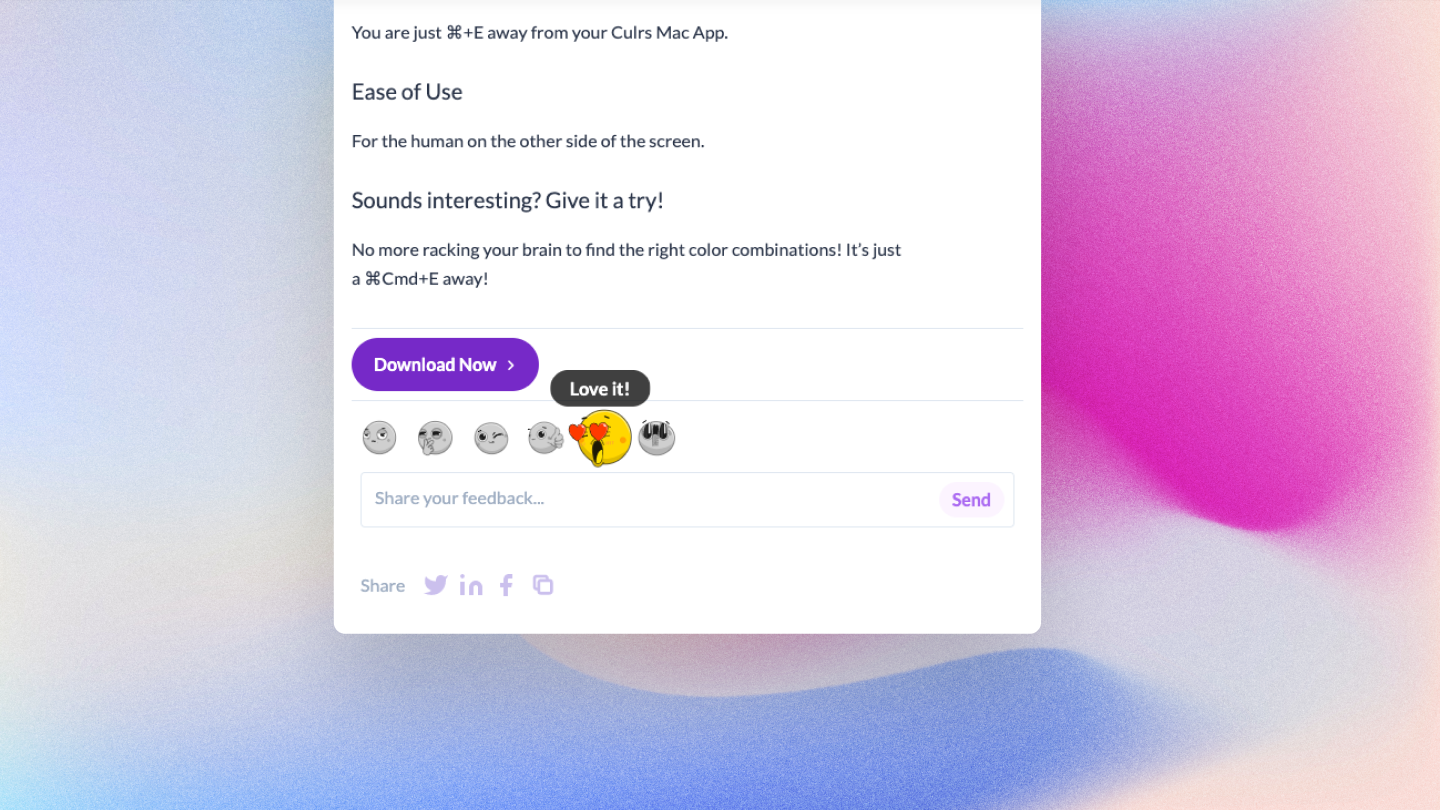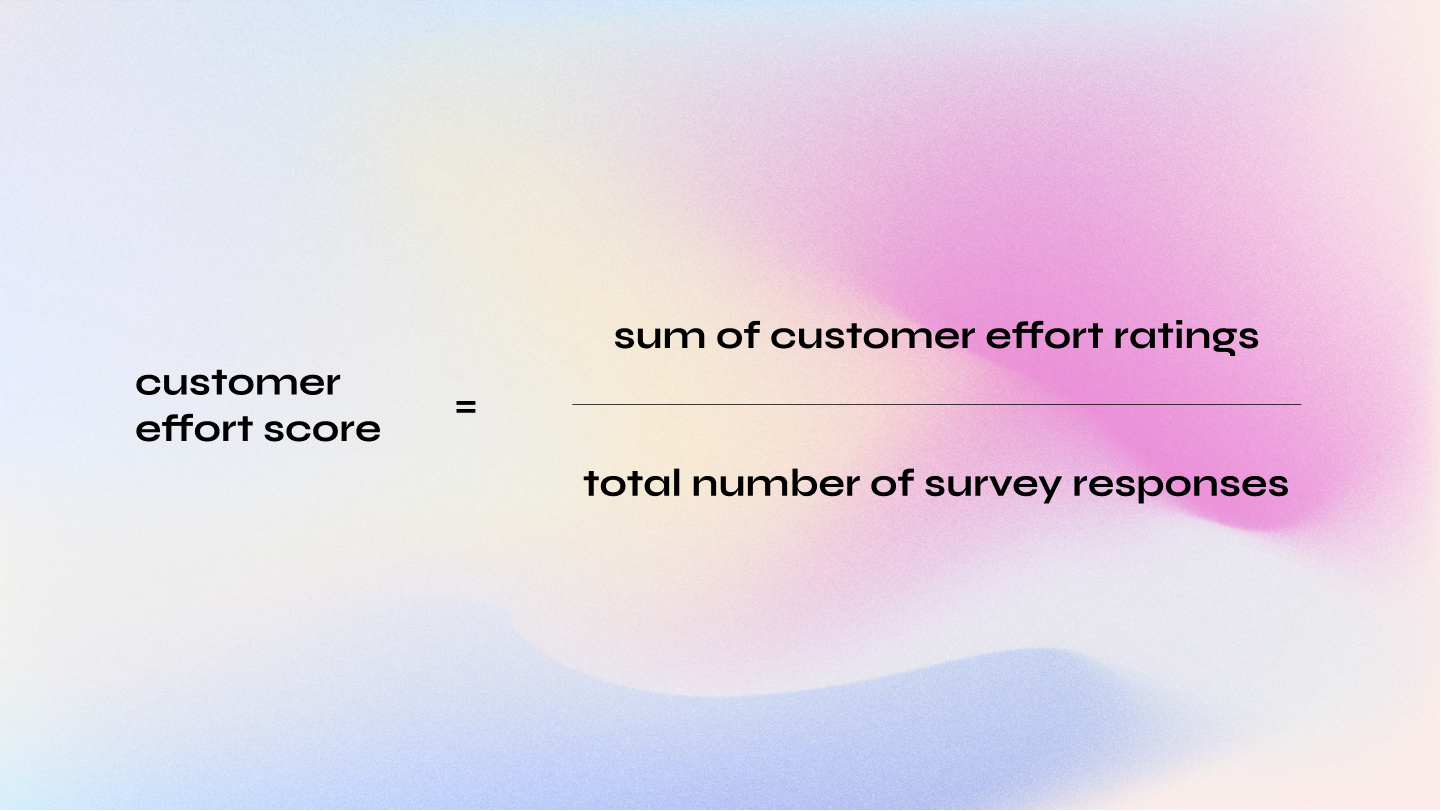Your company’s greatest assets are your customers and the relationship that you share with them. So, you should be aware of what your customers think about your product and how much your customers are satisfied by it. Various ways can be used to measure customer satisfaction scores.
One such way is the Customer Effort Score which measures the effort customers put in whenever they come in contact with your business. This way of measuring customer satisfaction scores impacts customers’ loyalty levels as well. Every business tries harder to achieve loyal customers so you should never ignore calculating customer effort scores.
If your customers will have to make greater efforts to reach you, they will prefer not to reach you and you will end up losing customers. To avoid this, you can simply ask your customers and visitors to know whether this is the case with your business.
Today in this article, we will tell you everything that you should know about customer effort scores. By the end of it, you will know how you can calculate, analyze, and interpret customer effort scores. Not only this, there are a lot of hidden things that need to be uncovered. So, let’s get ready to dive in.
What is the Customer Effort Score (CES)?
Just like any other score, a customer effort score is the result of a survey.
CES is a metric used to measure the effort customers put in to interact with any company. It measures how easy it is to deal with your company. Easiness is the most essential element in determining the customer’s future decision regarding your company’s product.
Whether the customers will make a purchase or recommend your product to others, will depend on the level of effort they have to expend.
The ease of a given experience is a better indicator of customer loyalty than simply measuring customer satisfaction score. In an increasingly competitive world, loyalty is a core pillar of successful organizations. The easiest way to increase customer loyalty is by making it easier for them to do what they need to do.
Therefore, instead of calculating customer satisfaction scores, calculate the level of easiness by using surveys.
You can ask questions to your customers using Olvy’s feedback tools.
Why measure CES?
We have been talking about customer effort scores but do you know what is the need to measure customer effort scores?
Here are a few reasons that reflect the need to measure customer effort scores.
Reduce the chances of negative feedback
An irritated and frustrated customer can be a threat to your company's reputation as the customer will spread negative reviews about your company's product. Measuring CES can help you identify and resolve the issues before that negative spread.
Minimize the burden of customer support service
Measuring customer effort scores will help you know the parts where better training and process improvements can speed up customer satisfaction by reducing their efforts. Putting this to work, you can reduce the burden of the customer support service team.
Help them win
Solving a problem feels like a win, so let your customers win by helping them solve their problems on their own. Measuring CES or running a survey will help you evaluate the features that you can add to your product to ease customer efforts.
Helps to enhance user experience
Conducting a customer effort score survey can help you in enhancing the user experience. Customers facing bad experiences can end up going to your competitors. So, it’s crucial to enhance the user experience to retain customers.
Helps to predict purchase behavior
CES can help you understand the customer experience with the company. If the customer made a purchase and had a good experience, that customer will come back in the future. This way a CES can help you predict the purchase behavior of customers.
Helps to predict customer loyalty
A customer who is required to put in less effort while interacting with your company will be a loyal customer. Calculating CES will help you predict whether you have a community of loyal customers.
Types of CES surveys
CES can be calculated by conducting various types of surveys that are commonly known as Customer Effort Score Surveys. These surveys can be of various types depending on the type of scale to be used and the required customer feedback.
Here are 3 types of customer effort score surveys that are used most of the time.
Numbered scale
In this type of customer effort score survey, you ask questions to your customers in the survey and they will answer by ranking on a numbered scale.
Suppose you asked a question about the ease of using the product. In this case, higher numbers given on the scale imply that the product was easy to use for the customers and vice-versa in case the number is lower.
To avoid confusion on this scale, you can also use color codes for more clarity.

Likert scale
The Likert Scale is a type of scale that shows customers' psychology by showing their personality, mental ability, opinions, interests, etc. On the Likert scale, you will make non-question statements and customers will rate whether they agree with the statement or not. You can mention points such as strongly disagree, disagree, undecided, agree, strongly agree, etc., on the scale.
You can use color codes in this scale as well for better clarity.

Emoticon scale
People love emoticons. In this type of survey scale, you will ask a question or make a statement and customers will respond by choosing an emoticon that best reflects their experience with your product.

When to send the CES survey?
Calculating CES is a good move for your company. But your customers will never sit on their screens waiting for your survey. You should know the right logical time when your customers should be part of the CES survey. Since timing is crucial for accurate responses, here are the best possible times when your survey will generate accurate scores.
After interaction for purchase or subscription
Customer effort score is usually measured by sending customers an automated post-interaction survey asking them to rate a specific statement on a defined scale, depending on the interaction they just completed. So, there is no better time than sending out surveys when the customer has recently interacted with your company.
After interaction with the customer support service team
Send CES surveys to customers whenever they interact with your customer support service team. Find out the amount of effort customers put in to solve their problems using CES surveys.
After the launch of new features
The customer effort score is also used by the product team,s to check whether the new features support well with the product well. Send the survey after the launch of the new feature to identify where the customers have difficulty with the new version. Make improvements based on customer feedback and customer effort score results.
Questions to ask in the CES survey
When you decide to survey your customers, it is important to ask the right question. Here are a few questions and statements that you can use in your survey that will help you calculate customer effort scores.
- How fast were you able to solve (problem)?
- How easy was it to solve (problem)?
- How much effort did you put in to solve (issue)?
- How helpful was it in solving (problem)?
- Overall, how easy was it to solve (problem) with Olvy today?
- Olvy made it easy for me to solve my issue - Statement
- How easy was it for you to sign up at Olvy?
Once you receive responses from customers, you can derive customer effort scores. Now let's move to the calculation of customer effort score.
How to Calculate the CES?
The formula to calculate your customer effort score is the sum of all the customer effort scores divided by the total number of survey responses.

The end result will tell you how much effort your customers put in while dealing with your company on average.
CES calculation will differ for different types of survey scales chosen.
- For the numbered scale, the score is calculated by the formula mentioned earlier.
- For the Likert Scale, the score is calculated by finding out the average of responses. This is done by assigning a number to each response. A higher average implies better CES whereas a lower average implies bad CES.
- In the emoticon scale, calculate the score by finding out the percentage of customers who have chosen happy face and unhappy face. Your CES is better if the percentage of happy faces is high and the percentage of unhappy ones is low.
How to interpret results of CES survey?
After the calculation, now comes the interpretation part. It’s crucial to correctly interpret results. So, it is essential to discuss it. There can be 3 different situations based on your results- high CES, moderate CES, or low CES.
- In case of high CES, you are not required to change your process since the customers are finding it easy to interact with your company. You are only required to calculate CES over time.
- In the case of moderate CES, customers are neutral with the process. You can try to improve and smoothen the process for them.
- In case of low CES, try to find out the root causes that are making it difficult for your customers to interact with your company and fix them.
Finding out issues is the real task that you need to accomplish since there might be many reasons for it.
Once the issue is identified, make improvements and then again test your CES to make sure the improvement has helped your customers in some ways.
The effectiveness of your product or internal procedure adjustments will be determined by tracking your CES over time. Dips in the score will assist you in addressing unanticipated concerns before they go out of hand.
What is a Good CES?
No single baseline is there for a good CES as multiple ranges are used to assess answers- some companies use a 1-5 scale, others 1-7, and some use happy-unhappy emoticons.
Regardless of the range or scale used, a common rule of thumb is that the higher the CES, the better it is for your company. A high CES score indicates that your company provides a seamless customer experience, whereas a low CES indicates that customers find your processes difficult or your customer service ineffective. Here is where your role comes in. Either improve your processes or risk losing loyal customers.
Potential for optimization exists where customers are having a difficult time dealing with your company so your efforts should be focussed there only.
Next Steps: What Now?
Customer experience is a constantly moving target, which is why it’s important to continually measure your Customer Effort Score—and act on any negative feedback that might be coming your way. Keep an eye on any trends in the data, and consistently work to make your process so easy that customers can’t imagine walking away from you. Olvy can help you get started with the CES survey to collect customer feedback. Since acting on customer feedback can prove to be beneficial for your company, don't take it lightly. If this feels like an additional burden, we at Olvy are here to assist you. Let's connect and we will together make customers happy.


